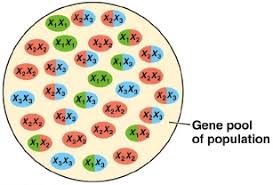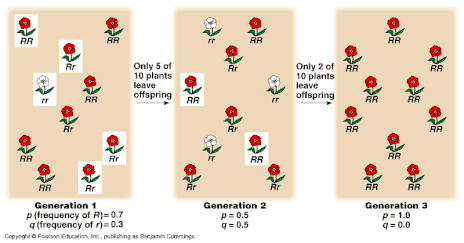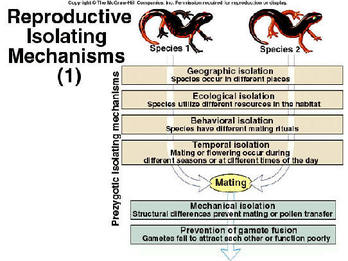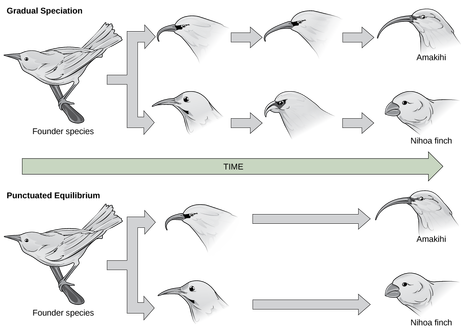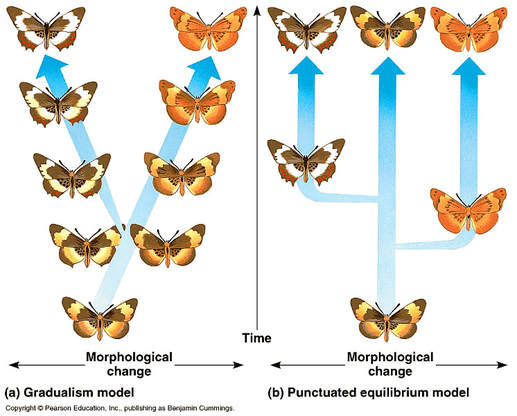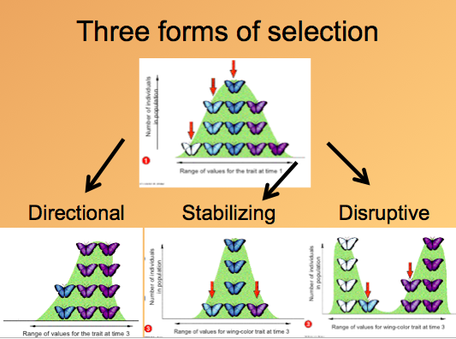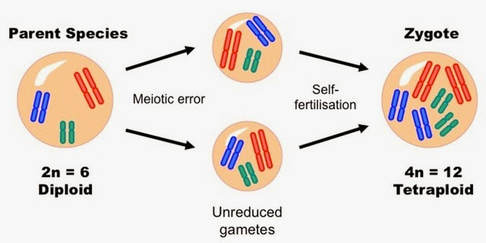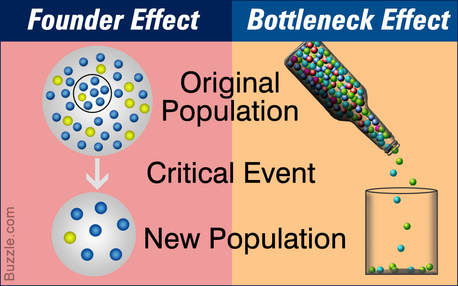- IB Style Question Banks with Solution
- IB DP Biology SL- IB Style Practice Questions with Answer-Topic Wise-Paper 1
- IB DP Biology HL- IB Style Practice Questions with Answer-Topic Wise-Paper 1
- IB DP Biology SL- IB Style Practice Questions with Answer-Topic Wise-Paper 2
- IB DP Biology HL- IB Style Practice Questions with Answer-Topic Wise-Paper 2
10.3 Gene Pools and Speciation
Essential Idea:
Gene pools change over time
Understandings:
- A gene pool consists of all the genes and their different alleles, present in an interbreeding population
- Evolution requires that allele frequencies change with time in populations
- Reproductive isolation of populations can be temporal, behavioural or geographic
- Speciation due to divergence of isolated populations can be gradual
- Speciation can occur abruptly
Applications:
- Identifying examples of directional, stabilising and disruptive selection
- Speciation in the genus Allium by polyploidy
Skills:
- Comparison of allele frequencies of geographically isolated populations
- Define gene pool.
- Given data, calculate allele frequencies of genes in a gene pool.
- Given data, calculate genotype frequencies for genes in a gene pool.
- Define evolution.
- Outline five factors that can cause evolutionary change.
- Compare allopatric and sympatric speciation.
- Define reproductive isolation.
- Explain temporal, behavioral and geographic isolation as mechanisms of speciation.
- Describe an example of temporal, behavioral and geographic reproductive isolation.
- Define speciation.
- Outline a limitation of the idea of evolution through gradualism.
- Identify gradualism from graphs of morphology changes over time.
- Define gradualism.
- Define punctuated equilibrium.
- Outline a possible cause of rapid speciation events.
- Identify punctuated equilibrium from graphs of morphology changes over time.
- Define stabilizing, disruptive and directional selection.
- Use graphs to illustrate or identify stabilizing, disruptive and directional selection.
- Outline how polyploidy has led to many species of Allium.
- List example species in the genus Allium (by common name)
- Compare allele frequencies of two populations.
- Describe how variations in the allele frequencies of a gene may be evidence of speciation.
- Define polyploidy.
- Outline causes of polyploidy.
- Explain how polyploidy can lead to speciation.
Topic 10.3: Gene Pools and Speciation
In the Gene Pools and Speciation unit we will learn some of the reasons why the genetics of a species can change over a long period of time. Charles Darwin’s The Origin of Species went into great depth in this matter, and providing substance into the theory of evolution. The key thing to remember about evolution is that it favours more preferable genes in the gene pool, and over time, these preferable characteristics become more exclusive in the gene pool
This unit will last 2 days
Essential idea:
- Gene pools change over time.
Nature of science:
- Looking for patterns, trends and discrepancies—patterns of chromosome number in some genera can be explained by speciation due to polyploidy. (3.1)
- Define polyploidy.
- Outline causes of polyploidy.
- Explain how polyploidy can lead to speciation.
10.3 U 1 A gene pool consists of all the genes and their different alleles, present in an interbreeding population.
- Define gene pool.
- Given data, calculate allele frequencies of genes in a gene pool.
- Given data, calculate genotype frequencies for genes in a gene pool.
A species is generally considered a group of potentially interbreeding populations that have a common gene pool and are reproductively isolated from other species. A gene pool is the set of all genes, including all the different alleles, in any interbreeding population, usually of a particular species
Allele frequency:
- the proportion of an allele within a population
- allele frequencies range from 0 to 1.0, or as a percentage
- evolution always involves a change in allele frequency in a population’s gene pool, over a number of generations
Gene pool:
- the sum total of alleles present in a sexually reproducing population.
10.3 U 2 Evolution requires that allele frequencies change with time in populations.
- Define evolution.
- Outline five factors that can cause evolutionary change.
Evolution is the cumulative change in allele frequency or heritable characteristics in a population over time. The cumulative change can occur as a result of genetic mutations and selective pressures which favour certain heritable characteristics over other less favourable characteristics.
These populations have to be reproductively isolated, thus preventing gene flow between populations. If a population that has a certain allele or characteristic is quite small, random events such as disease or natural disasters can cause a drastic drop in this particular allele
10.3 U 3 Reproductive isolation of populations can be temporal, behavioural or geographic.
- Define speciation.
- Compare allopatric and sympatric speciation.
- Define reproductive isolation.
- Explain temporal, behavioral and geographic isolation as mechanisms of speciation.
- Describe an example of temporal, behavioral and geographic reproductive isolation.
PRE-ZYGOTIC BARRIERS (barriers that prevent mating or fertilisation):
- Temporal isolation – occurs when two species mate or flower at different times of the year.
- Behavioural isolation – occurs when two species respond to different specific courtship patterns.
- Geographic isolation – occurs when two populations of the same species or breeding group are separated by a physical barrier, such as a mountain or body of water.
- Ecological isolation – occurs when two species inhabit similar regions, but occupy different habitats.
- Mechanical isolation – occurs when genital differences prevent copulation (animals) or when flowers are pollinated by different animals (plants).
POST-ZYGOTIC BARRIERS (barriers that prevent hybrid zygote turning into a strong adult):
- Hybrid inviability – hybrids are produced but fail to develop to reproductive maturity.
- Hybrid infertility – hybrids fail to produce functional gametes.
- Hybrid breakdown – the F1 (first generation) hybrids are fertile but the F2 fail to develop or are infertile.
10.3 U 4 Speciation due to divergence of isolated populations can be gradual.
- Define gradualism.
- Outline a limitation of the idea of evolution through gradualism.
- Identify gradualism from graphs of morphology changes over time.
Species descended from a common ancestor gradually diverge more and more in morphology i.e. become phenotypically different – adaptive radiation, through the slow but relentless effects of natural selection.
10.3 U 5 Speciation can occur abruptly.
- Define punctuated equilibrium.
- Outline a possible cause of rapid speciation events.
- Identify punctuated equilibrium from graphs of morphology changes over time.
10.3 A 1 Identifying examples of directional, stabilizing and disruptive selection
- Define stabilizing, disruptive and directional selection.
- Use graphs to illustrate or identify stabilizing, disruptive and directional selection.
Directional Selection:
- Selection that removes individuals from one end of a phenotypic distribution and thus causes a shift in the distribution towards the other end. This occurs when natural selection favours one extreme end of the continuous variation of phenotypes. Over time, the favoured extreme will become more common and the other extreme will be less common or lost. For example, dark mice are favoured because they live in an area that favours that phenotype.
Stabilizing Selection:
- A type of selection that removes individuals from both ends of a phenotypic distribution, thus maintaining the same distribution mean. This occurs when natural selection favours the intermediate phenotypes. Over time, the intermediate states become more common and each extreme variation will become less common or lost. Same mouse example where medium coloured fur is favoured over dark or light fur colour.
Disruptive Selection:
- A type of selection that removes individuals from the center of a phenotypic distribution and thus causes the distribution to become bimodal. This occurs when natural selection favours both ends of the phenotypic variation. Over time, the two extreme variations will become more common and the intermediate states will be less common or lost. Disruptive selection can lead to two new species. Light coloured and dark coloured mice might live in an environment with patches of light and dark vegetation making it hard for predators to spot those colours, while the middle coloured mouse doesn’t blend into either background.
10.3 A 2 Speciation in the genus Allium by polyploidy.
- List example species in the genus Allium (by common name).
- Outline how polyploidy has led to many species of Allium.
The genus Allium comprises monocot flowering plants and includes the onion, garlic, chives, scallion, shallot, and the leek. In many of these species of plants, chromosome doubling has occurred naturally and through hybridization or selective breeding to create a large number of different phenotypes. This results in a number of reproductively isolated but similar populations.
Polyploidy is a condition in which an organism has more than two complete sets of chromosomes in all somatic cells i.e. > diploid. It is far more common in plant species as they lack separate sexes and are capable of asexual reproduction (self-pollination). It may occur as a result of the failure of a meiotic cell to undergo cytokinesis (so chromosome replication occurs minus cell division). Consequently, gametes are diploid (2n) and resulting offspring are tetraploid (4n). Because tetraploid offspring can no longer mate with diploid organisms (triploid offspring tend to be infertile), speciation has occurred.
10.3 S 1 Comparison of allele frequencies of geographically isolated populations.(Oxford Biology Course Companion page 459)
- Compare allele frequencies of two populations.
- Describe how variations in the allele frequencies of a gene may be evidence of speciation.


